Search Result
Results for "
phospholipid synthesis
" in MedChemExpress (MCE) Product Catalog:
6
Biochemical Assay Reagents
10
Isotope-Labeled Compounds
| Cat. No. |
Product Name |
Target |
Research Areas |
Chemical Structure |
-
- HY-D1610
-
|
|
Fluorescent Dye
|
Others
|
|
BODIPY FL C5 is a green fluorescent fatty acid. BODIPY FL C5 can be used as a precursor for the synthesis of various fluorescent phospholipids. BODIPY FL C5 is relatively insensitive to the environment and fluoresces in both water-soluble and lipid environments .
|
-
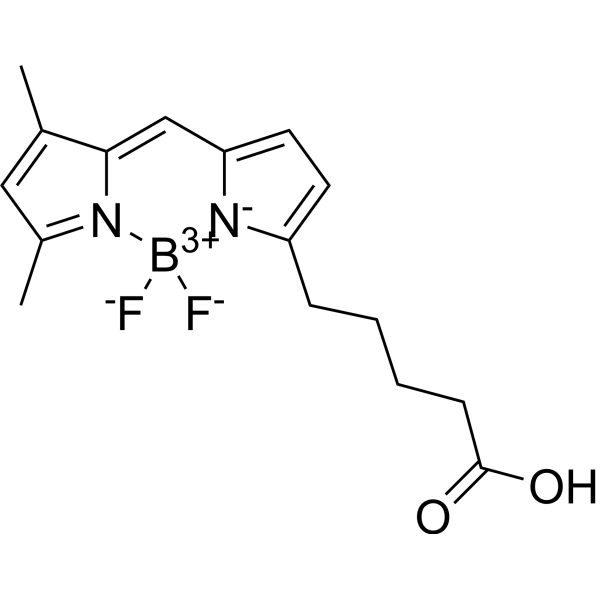
-
- HY-113400
-
|
Cytidine diphosphate
|
Endogenous Metabolite
|
Others
|
|
Cytidine 5'-diphosphate (Cytidine diphosphate) is a nucleoside diphosphate that acts as a carrier for phosphorylcholine, diacylglycerol, and other molecules during phospholipid synthesis .
|
-
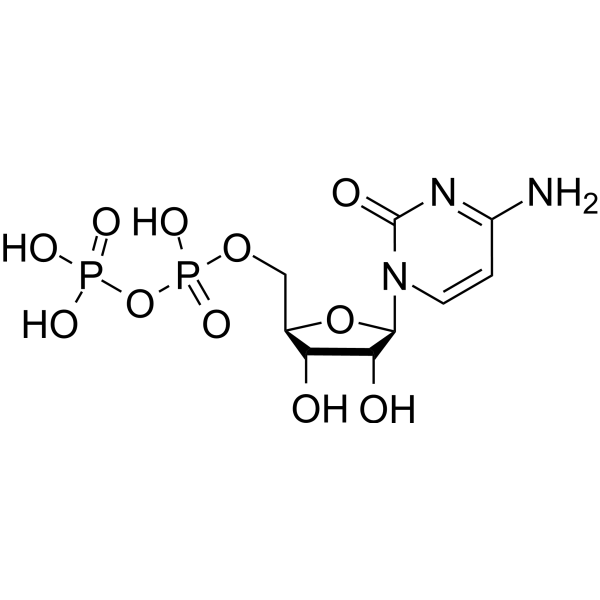
-
- HY-W008940
-
|
Cytidine diphosphate disodium
|
Endogenous Metabolite
|
Metabolic Disease
|
|
Cytidine 5'-diphosphate (Cytidine) disodium salt is a nucleoside diphosphate that acts as a carrier for phosphorylcholine, diacylglycerol, and other molecules during phospholipid synthesis .
|
-
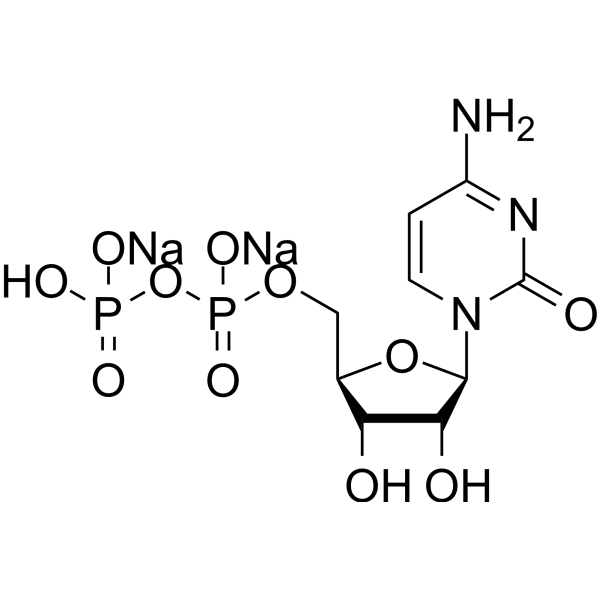
-
- HY-135130
-
|
(-)-BABX
|
Bacterial
|
Infection
|
|
Bischloroanthrabenzoxocinone is a potent Type II fatty acid synthesis (FASII) inhibitor. Bischloroanthrabenzoxocinone inhibits fatty acid synthesis. Bischloroanthrabenzoxocinone shows antibacterial activities and inhibits phospholipid, DNA, RNA, protein, and cell wall synthesis .
|
-
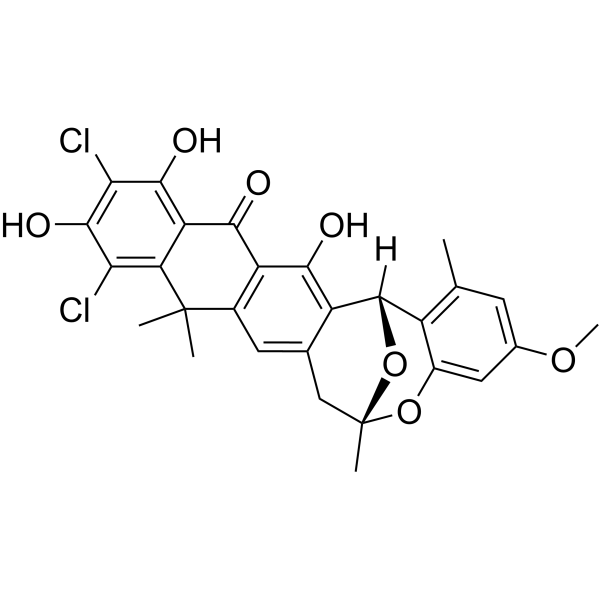
-
- HY-148601
-
|
DSPG
|
Liposome
|
Others
|
|
1,2-Distearoyl-sn-Glycero-3-Phosphatidylglycerol is an anionic phospholipid, can be used for drug delivery and the synthesis of liposomes.
|
-
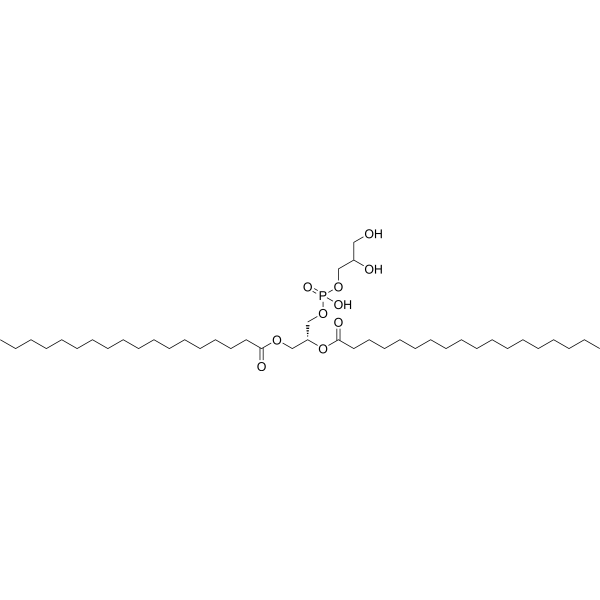
-
- HY-112307A
-
|
|
Liposome
|
Others
|
|
(Rac)-1,2-Distearoyl-sn-Glycero-3-Phosphatidylglycerol (sodium) is an anionic phospholipid, can be used for drug delivery and the synthesis of liposomes .
|
-
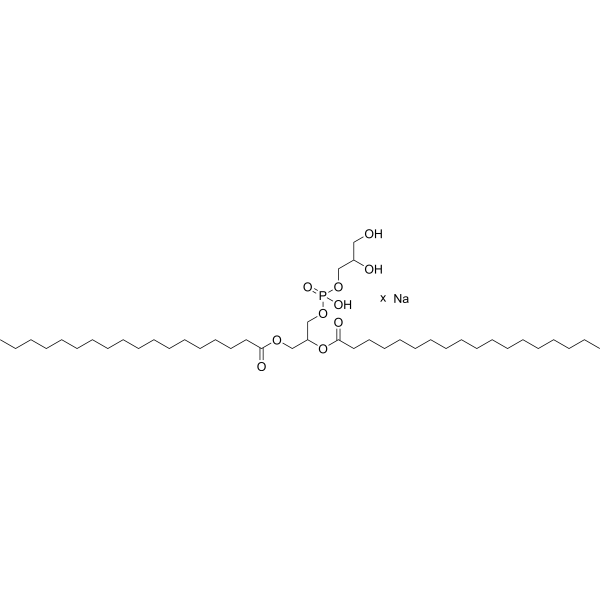
-
- HY-125924
-
|
DSPE-PEG-NH2, MW 2000 ammonium
|
Liposome
|
Others
|
|
DSPE-PEG-Amine, MW 2000 (ammonium), an amine derivative of phospholipid poly ethylene glycol, is used in the synthesis of solid lipid and thermosensitive liposomal nanoparticles for the delivery of anticancer agents .
|
-
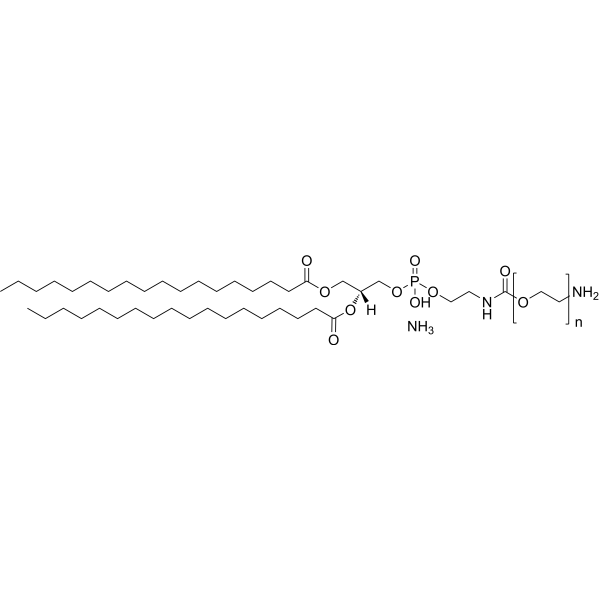
-
- HY-B0158
-
|
Cytosine β-D-riboside; Cytosine-1-β-D-ribofuranoside
|
Nucleoside Antimetabolite/Analog
Endogenous Metabolite
|
Neurological Disease
|
|
Cytidine is a pyrimidine nucleoside and acts as a component of RNA. Cytidine is a precursor of uridine. Cytidine controls neuronal-glial glutamate cycling, affecting cerebral phospholipid metabolism, catecholamine synthesis, and mitochondrial function .
|
-
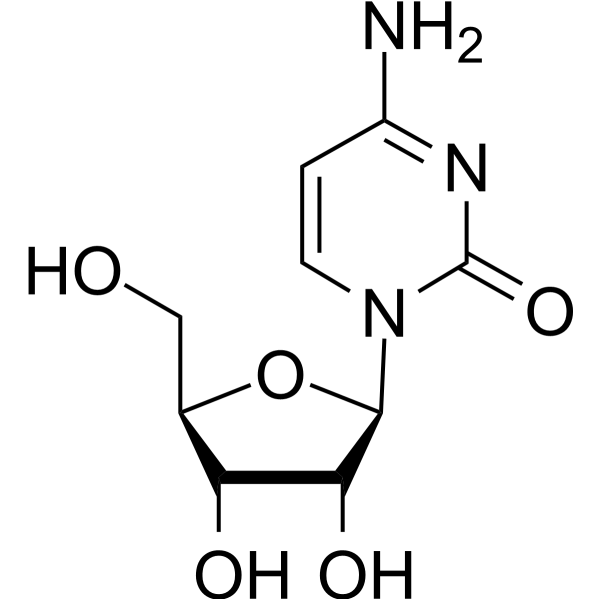
-
- HY-142978
-
|
DSPE-mPEG2000; 1,2-Distearoyl-sn-glycero-3-phosphoethanolamine-N-[methoxy(polyethylene glycol)-2000]
|
Liposome
|
Cancer
|
|
18:0 mPEG2000 PE (DSPE-mPEG2000) is a PEG-based phospholipid. 18:0 mPEG2000 PE can be used to synthesis liposomes for delivering cancer agents .
|
-

-
- HY-113400S3
-
|
|
Isotope-Labeled Compounds
Endogenous Metabolite
|
Others
|
|
Cytidine diphosphate-d13 dilithium is deuterium labeled Cytidine diphosphate (HY-113400). Cytidine diphosphate is a nucleoside diphosphate that acts as a carrier for phosphorylcholine, diacylglycerol, and other molecules during phospholipid synthesis.
|
-

-
- HY-113400S
-
|
|
Isotope-Labeled Compounds
Endogenous Metabolite
|
Others
|
|
Cytidine diphosphate- 15N3 dilithium is 15N labeled Cytidine diphosphate (HY-113400). Cytidine diphosphate is a nucleoside diphosphate that acts as a carrier for phosphorylcholine, diacylglycerol, and other molecules during phospholipid synthesis.
|
-
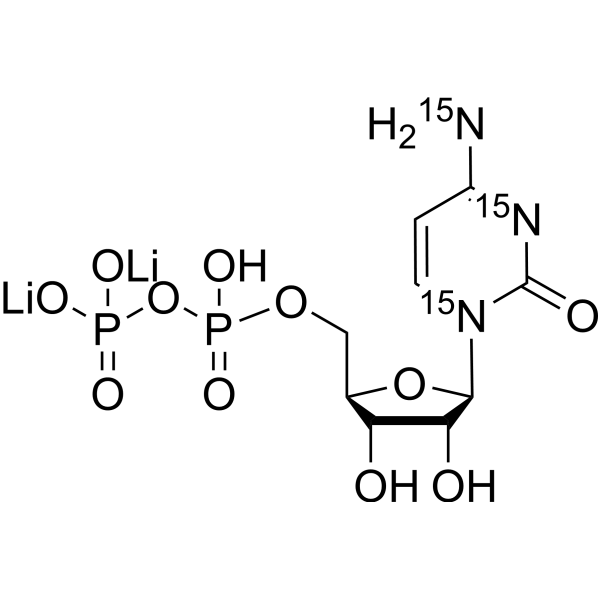
-
- HY-113400S1
-
|
|
Isotope-Labeled Compounds
Endogenous Metabolite
|
Others
|
|
Cytidine diphosphate- 13C9 dilithium is 13C-labeled Cytidine diphosphate (HY-113400). Cytidine diphosphate is a nucleoside diphosphate that acts as a carrier for phosphorylcholine, diacylglycerol, and other molecules during phospholipid synthesis.
|
-
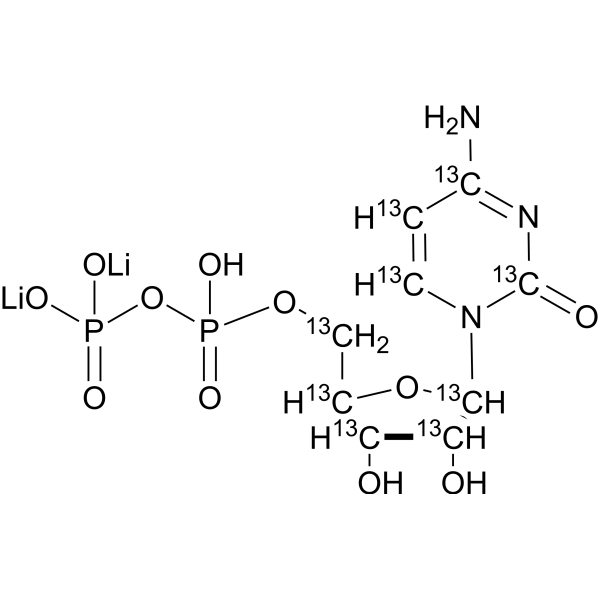
-
- HY-148165
-
-
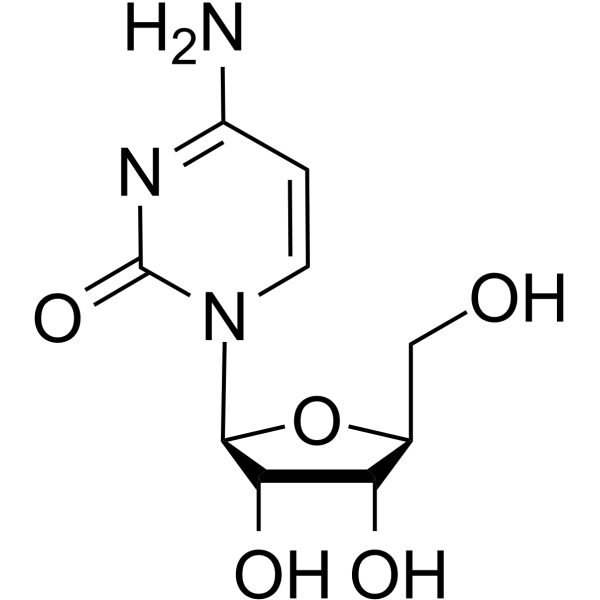
-
- HY-113400S2
-
|
|
Isotope-Labeled Compounds
Endogenous Metabolite
|
Others
|
|
Cytidine diphosphate- 13C9, 15N3 dilithium is 13C and 15N-labeled Cytidine diphosphate (HY-113400). Cytidine diphosphate is a nucleoside diphosphate that acts as a carrier for phosphorylcholine, diacylglycerol, and other molecules during phospholipid synthesis.
|
-
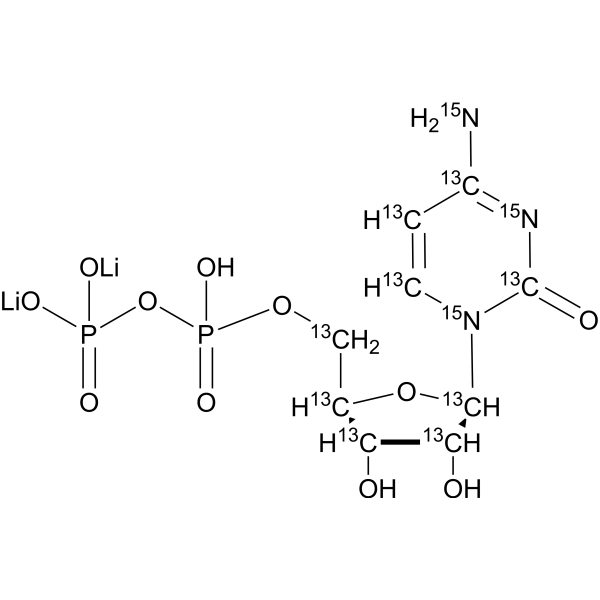
-
- HY-B0158S
-
|
Cytosine β-D-riboside-d2; Cytosine-1-β-D-ribofuranoside-d2
|
Nucleoside Antimetabolite/Analog
Endogenous Metabolite
|
Neurological Disease
|
|
Cytidine-d2 is the deuterium labeled Cytidine. Cytidine is a pyrimidine nucleoside and acts as a component of RNA. Cytidine is a precursor of uridine. Cytidine controls neuronal-glial glutamate cycling, affecting cerebral phospholipid metabolism, catecholamine synthesis, and mitochondrial function[1][2][3].
|
-

-
- HY-B0158S6
-
|
Cytosine β-D-riboside-15N3; Cytosine-1-β-D-ribofuranoside-15N3
|
Nucleoside Antimetabolite/Analog
Endogenous Metabolite
|
Neurological Disease
|
|
Cytidine- 15N3 is the 15N labeled Cytidine[1]. Cytidine is a pyrimidine nucleoside and acts as a component of RNA. Cytidine is a precursor of uridine. Cytidine controls neuronal-glial glutamate cycling, affecting cerebral phospholipid metabolism, catecholamine synthesis, and mitochondrial function[2][3][4].
|
-

-
- HY-150220
-
|
|
Liposome
|
Others
|
|
1,5-Dihexadecyl N-(3-carboxy-1-oxopropyl)-L-glutamate is a lipid. 1,5-Dihexadecyl N-(3-carboxy-1-oxopropyl)-L-glutamate can be used for the synthesis of phospholipid vesicle and improve the encapsulation efficiency of proteins .
|
-

-
- HY-B0158S5
-
|
Cytosine β-D-riboside-13C9,15N3; Cytosine-1-β-D-ribofuranoside-13C9,15N3
|
Nucleoside Antimetabolite/Analog
Endogenous Metabolite
|
Neurological Disease
|
|
Cytidine- 13C9, 15N3 is the 13C and 15N labeled Cytidine[1]. Cytidine is a pyrimidine nucleoside and acts as a component of RNA. Cytidine is a precursor of uridine. Cytidine controls neuronal-glial glutamate cycling, affecting cerebral phospholipid metabolism, catecholamine synthesis, and mitochondrial function[2][3][4].
|
-

-
- HY-107614
-
|
1-Oleoyl-sn-glycero-3-phosphate sodium; 1-Oleoyl-LPA sodium
|
LPL Receptor
|
Neurological Disease
|
|
1-Oleoyl lysophosphatidic acid (1-Oleoyl-sn-glycero-3-phosphate) sodium, a potent bioactive phospholipid, is a LPA receptor activator. 1-Oleoyl lysophosphatidic acid sodium can promote mitosis by inducing DNA synthesis. 1-Oleoyl lysophosphatidic acid sodium is also involved in normal and pathological emotional responses, including anxiety and depression .
|
-
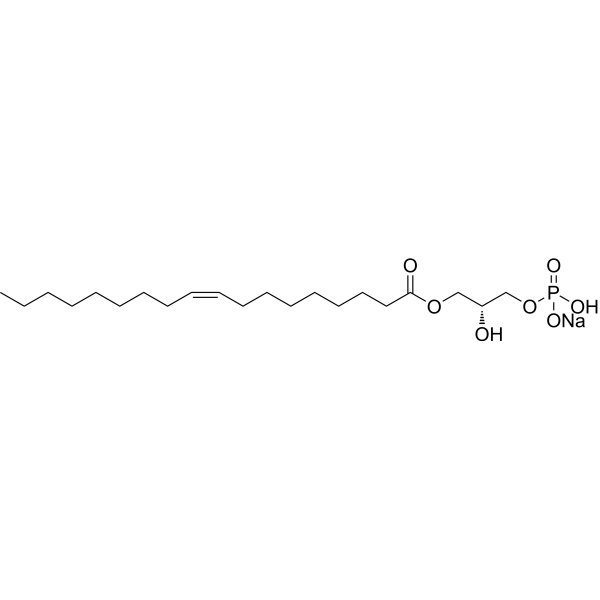
-
- HY-B0158S8
-
|
Cytosine β-D-riboside-d13; Cytosine-1-β-D-ribofuranoside-d13
|
Nucleoside Antimetabolite/Analog
Endogenous Metabolite
Isotope-Labeled Compounds
|
Neurological Disease
|
|
Cytidine-d13 (Cytosine β-D-riboside-d13; Cytosine-1-β-D-ribofuranoside-d13) is deuterium labeled Cytidine (HY-B0158). Cytidine is a pyrimidine nucleoside and acts as a component of RNA. Cytidine is a precursor of uridine. Cytidine controls neuronal-glial glutamate cycling, affecting cerebral phospholipid metabolism, catecholamine synthesis, and mitochondrial function .
|
-

-
- HY-B0158S7
-
|
Cytosine β-D-riboside-13C9; Cytosine-1-β-D-ribofuranoside-13C9
|
Nucleoside Antimetabolite/Analog
Endogenous Metabolite
Isotope-Labeled Compounds
|
Neurological Disease
|
|
Cytidine- 13C9 (Cytosine β-D-riboside- 13C9; Cytosine-1-β-D-ribofuranoside- 13C9) is 13C labeled Cytidine (HY-B0158). Cytidine is a pyrimidine nucleoside and acts as a component of RNA. Cytidine is a precursor of uridine. Cytidine controls neuronal-glial glutamate cycling, affecting cerebral phospholipid metabolism, catecholamine synthesis, and mitochondrial function .
|
-

-
- HY-N7833
-
|
Heneicosapentaenoic acid
|
Biochemical Assay Reagents
|
Others
|
|
Heneicosapentaenoic Acid (HPA) is a 21:5 omega-3 fatty acid found in trace amounts in the green alga B. pennata and in fish oils. Its chemical composition is similar to eicosapentaenoic acid (EPA), except that a carbon is extended at the carboxy terminus, placing the first double bond at the δ6 position. HPA can be used to study the importance of double bond position in omega-3 fatty acids. It incorporates phospholipids and triacylglycerols in vivo with the same efficiency as EPA and docosahexaenoic acid, and exhibits a strong inhibitory effect on the synthesis of arachidonic acid from linoleic acid. HPA is a poor substrate for prostaglandin H synthase (PGHS) (cyclooxygenase) and 5-lipoxygenase, but retains the ability to rapidly inactivate PGHS.
|
-
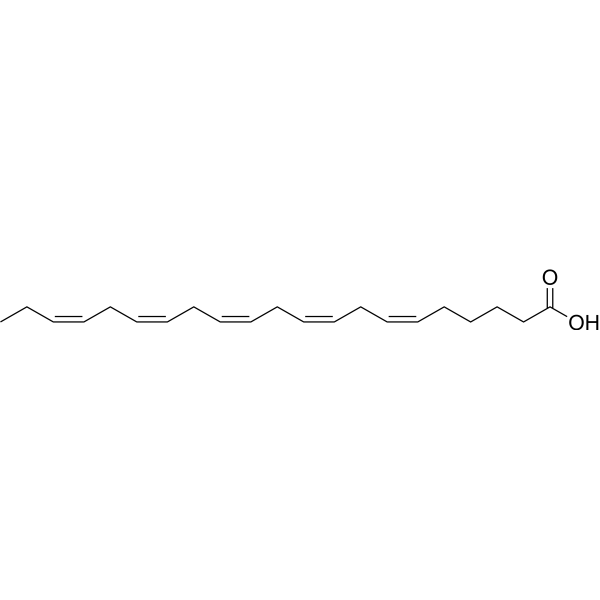
-
- HY-N6792S
-
|
T-2 Mycotoxin-13C24
|
Isotope-Labeled Compounds
|
Metabolic Disease
|
|
T-2 Toxin- 13C24 (T-2 Mycotoxin- 13C24) is 13C-labeled T-2 Toxin (HY-N6792). T-2 Toxin (T-2 Mycotoxin) is a toxic trichothecene mycotoxin produced by various Fusarium species in feedstuffs and cereal grains. T-2 Toxin (T-2 Mycotoxin) inhibits the synthesis of DNA and RNA, interferes with the metabolism of membrane phospholipids, and increases the level of liver lipid peroxides. T-2 Toxin (T-2 Mycotoxin) induces apoptosis in the immune system, gastrointestinal tissues, and fetal tissues .
|
-

-
- HY-N6792
-
|
T-2 Mycotoxin
|
Apoptosis
DNA/RNA Synthesis
|
Metabolic Disease
|
|
T-2 Toxin (T-2 Mycotoxin) is a toxic trichothecene mycotoxin produced by various Fusarium species in feedstuffs and cereal grains, LD50 values of T-2 Toxin in mice and rats are 5.2 and 1.5 mg/kg BW a,respectively . T-2 Toxin (T-2 Mycotoxin) can be transformed into a variety of metabolite, the typical metabolites of T-2 toxin in animals are HT-2 toxin and T-2-triol, which are hydrolysates . T-2 Toxin (T-2 Mycotoxin) is an inhibitor of protein synthesis resulting from binding peptidyltransferase, which is an integral part of the 60s ribosomal subunit. T-2 Toxin (T-2 Mycotoxin) inhibits the synthesis of DNA and RNA, interferes with the metabolism of membrane phospholipids, and increases the level of liver lipid peroxides . T-2 Toxin (T-2 Mycotoxin) induces apoptosis in the immune system, gastrointestinal tissues, and fetal tissues .
|
-

| Cat. No. |
Product Name |
Type |
-
- HY-D1610
-
|
|
Dyes
|
|
BODIPY FL C5 is a green fluorescent fatty acid. BODIPY FL C5 can be used as a precursor for the synthesis of various fluorescent phospholipids. BODIPY FL C5 is relatively insensitive to the environment and fluoresces in both water-soluble and lipid environments .
|
| Cat. No. |
Product Name |
Type |
-
- HY-112307A
-
|
|
Drug Delivery
|
|
(Rac)-1,2-Distearoyl-sn-Glycero-3-Phosphatidylglycerol (sodium) is an anionic phospholipid, can be used for drug delivery and the synthesis of liposomes .
|
-
- HY-125924
-
|
DSPE-PEG-NH2, MW 2000 ammonium
|
Drug Delivery
|
|
DSPE-PEG-Amine, MW 2000 (ammonium), an amine derivative of phospholipid poly ethylene glycol, is used in the synthesis of solid lipid and thermosensitive liposomal nanoparticles for the delivery of anticancer agents .
|
-
- HY-150220
-
|
|
Drug Delivery
|
|
1,5-Dihexadecyl N-(3-carboxy-1-oxopropyl)-L-glutamate is a lipid. 1,5-Dihexadecyl N-(3-carboxy-1-oxopropyl)-L-glutamate can be used for the synthesis of phospholipid vesicle and improve the encapsulation efficiency of proteins .
|
-
- HY-148601
-
|
DSPG
|
Drug Delivery
|
|
1,2-Distearoyl-sn-Glycero-3-Phosphatidylglycerol is an anionic phospholipid, can be used for drug delivery and the synthesis of liposomes.
|
-
- HY-142978
-
|
DSPE-mPEG2000; 1,2-Distearoyl-sn-glycero-3-phosphoethanolamine-N-[methoxy(polyethylene glycol)-2000]
|
Drug Delivery
|
|
18:0 mPEG2000 PE (DSPE-mPEG2000) is a PEG-based phospholipid. 18:0 mPEG2000 PE can be used to synthesis liposomes for delivering cancer agents .
|
-
- HY-N7833
-
|
Heneicosapentaenoic acid
|
Biochemical Assay Reagents
|
|
Heneicosapentaenoic Acid (HPA) is a 21:5 omega-3 fatty acid found in trace amounts in the green alga B. pennata and in fish oils. Its chemical composition is similar to eicosapentaenoic acid (EPA), except that a carbon is extended at the carboxy terminus, placing the first double bond at the δ6 position. HPA can be used to study the importance of double bond position in omega-3 fatty acids. It incorporates phospholipids and triacylglycerols in vivo with the same efficiency as EPA and docosahexaenoic acid, and exhibits a strong inhibitory effect on the synthesis of arachidonic acid from linoleic acid. HPA is a poor substrate for prostaglandin H synthase (PGHS) (cyclooxygenase) and 5-lipoxygenase, but retains the ability to rapidly inactivate PGHS.
|
| Cat. No. |
Product Name |
Category |
Target |
Chemical Structure |
| Cat. No. |
Product Name |
Chemical Structure |
-
- HY-B0158S
-
|
|
|
Cytidine-d2 is the deuterium labeled Cytidine. Cytidine is a pyrimidine nucleoside and acts as a component of RNA. Cytidine is a precursor of uridine. Cytidine controls neuronal-glial glutamate cycling, affecting cerebral phospholipid metabolism, catecholamine synthesis, and mitochondrial function[1][2][3].
|
-

-
- HY-113400S3
-
|
|
|
Cytidine diphosphate-d13 dilithium is deuterium labeled Cytidine diphosphate (HY-113400). Cytidine diphosphate is a nucleoside diphosphate that acts as a carrier for phosphorylcholine, diacylglycerol, and other molecules during phospholipid synthesis.
|
-

-
- HY-113400S
-
|
|
|
Cytidine diphosphate- 15N3 dilithium is 15N labeled Cytidine diphosphate (HY-113400). Cytidine diphosphate is a nucleoside diphosphate that acts as a carrier for phosphorylcholine, diacylglycerol, and other molecules during phospholipid synthesis.
|
-

-
- HY-113400S1
-
|
|
|
Cytidine diphosphate- 13C9 dilithium is 13C-labeled Cytidine diphosphate (HY-113400). Cytidine diphosphate is a nucleoside diphosphate that acts as a carrier for phosphorylcholine, diacylglycerol, and other molecules during phospholipid synthesis.
|
-

-
- HY-113400S2
-
|
|
|
Cytidine diphosphate- 13C9, 15N3 dilithium is 13C and 15N-labeled Cytidine diphosphate (HY-113400). Cytidine diphosphate is a nucleoside diphosphate that acts as a carrier for phosphorylcholine, diacylglycerol, and other molecules during phospholipid synthesis.
|
-

-
- HY-B0158S6
-
|
|
|
Cytidine- 15N3 is the 15N labeled Cytidine[1]. Cytidine is a pyrimidine nucleoside and acts as a component of RNA. Cytidine is a precursor of uridine. Cytidine controls neuronal-glial glutamate cycling, affecting cerebral phospholipid metabolism, catecholamine synthesis, and mitochondrial function[2][3][4].
|
-

-
- HY-B0158S5
-
|
|
|
Cytidine- 13C9, 15N3 is the 13C and 15N labeled Cytidine[1]. Cytidine is a pyrimidine nucleoside and acts as a component of RNA. Cytidine is a precursor of uridine. Cytidine controls neuronal-glial glutamate cycling, affecting cerebral phospholipid metabolism, catecholamine synthesis, and mitochondrial function[2][3][4].
|
-

-
- HY-B0158S8
-
|
|
|
Cytidine-d13 (Cytosine β-D-riboside-d13; Cytosine-1-β-D-ribofuranoside-d13) is deuterium labeled Cytidine (HY-B0158). Cytidine is a pyrimidine nucleoside and acts as a component of RNA. Cytidine is a precursor of uridine. Cytidine controls neuronal-glial glutamate cycling, affecting cerebral phospholipid metabolism, catecholamine synthesis, and mitochondrial function .
|
-

-
- HY-B0158S7
-
|
|
|
Cytidine- 13C9 (Cytosine β-D-riboside- 13C9; Cytosine-1-β-D-ribofuranoside- 13C9) is 13C labeled Cytidine (HY-B0158). Cytidine is a pyrimidine nucleoside and acts as a component of RNA. Cytidine is a precursor of uridine. Cytidine controls neuronal-glial glutamate cycling, affecting cerebral phospholipid metabolism, catecholamine synthesis, and mitochondrial function .
|
-

-
- HY-N6792S
-
|
|
|
T-2 Toxin- 13C24 (T-2 Mycotoxin- 13C24) is 13C-labeled T-2 Toxin (HY-N6792). T-2 Toxin (T-2 Mycotoxin) is a toxic trichothecene mycotoxin produced by various Fusarium species in feedstuffs and cereal grains. T-2 Toxin (T-2 Mycotoxin) inhibits the synthesis of DNA and RNA, interferes with the metabolism of membrane phospholipids, and increases the level of liver lipid peroxides. T-2 Toxin (T-2 Mycotoxin) induces apoptosis in the immune system, gastrointestinal tissues, and fetal tissues .
|
-

Your information is safe with us. * Required Fields.
Inquiry Information
- Product Name:
- Cat. No.:
- Quantity:
- MCE Japan Authorized Agent:
































